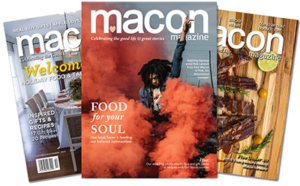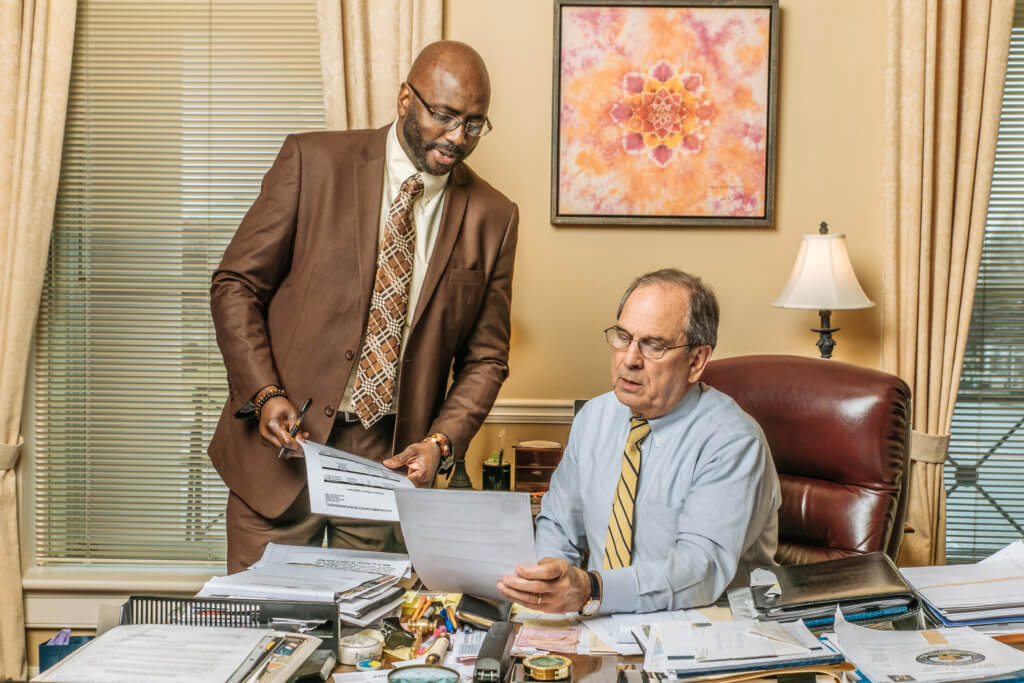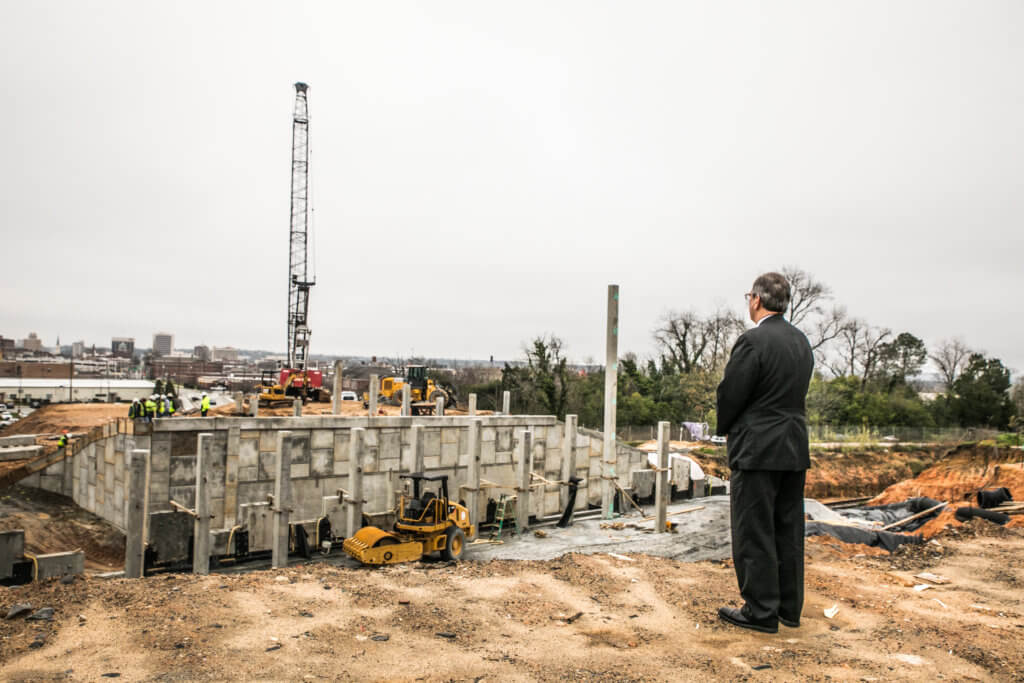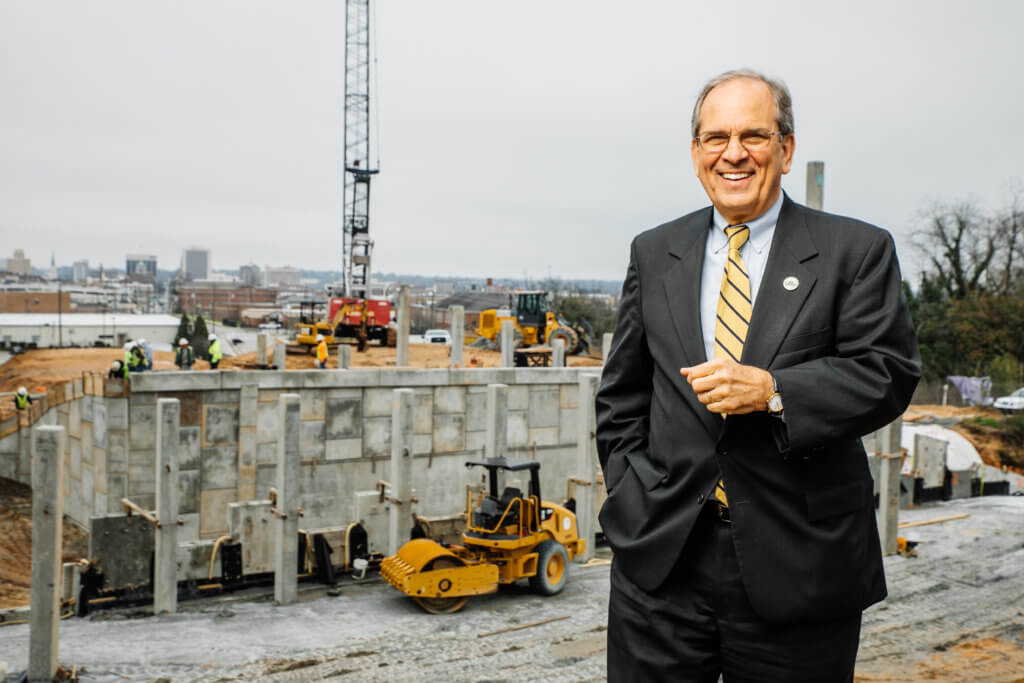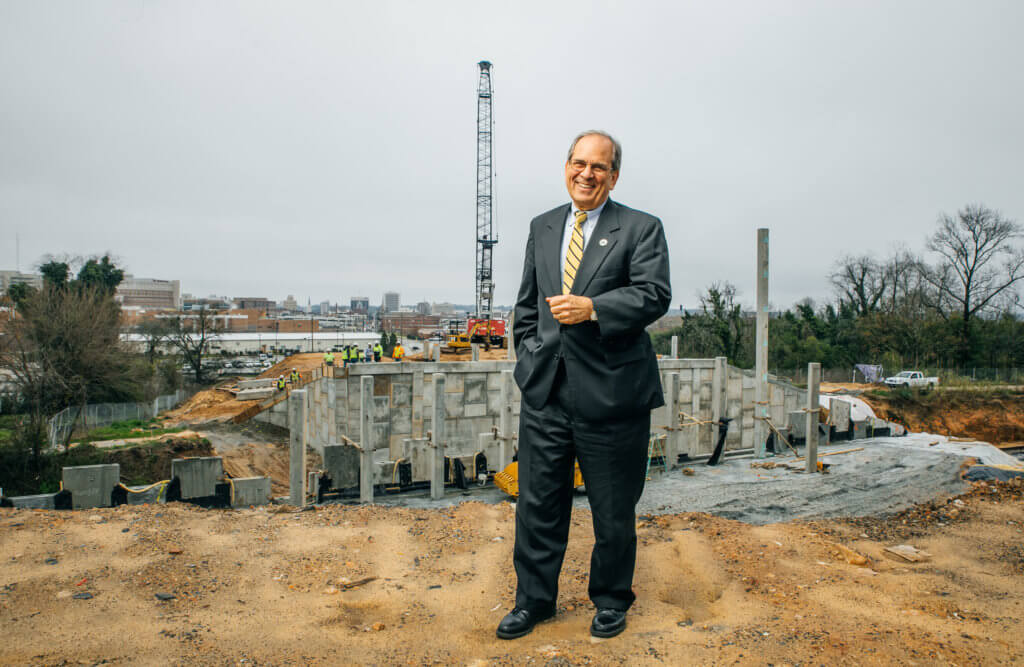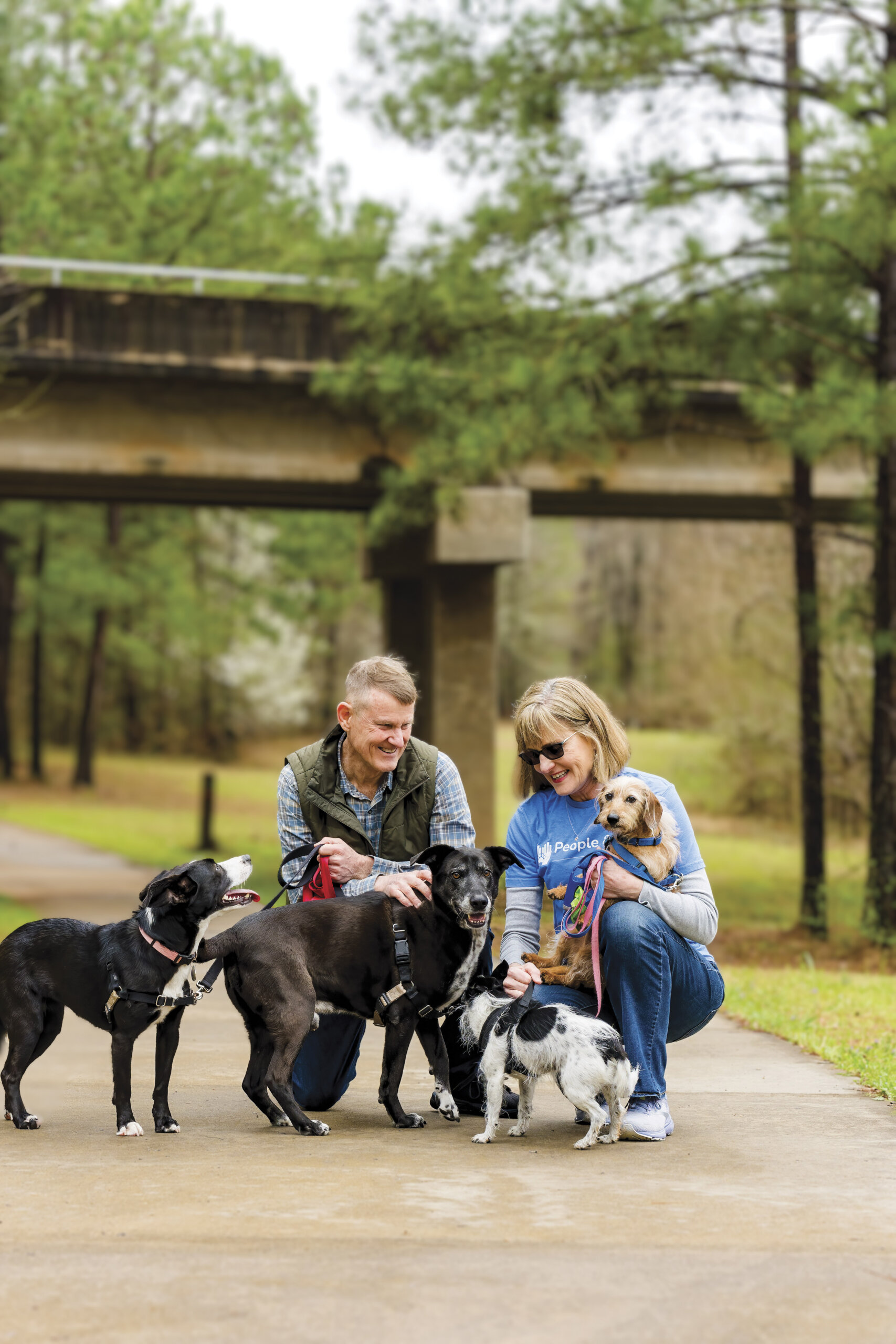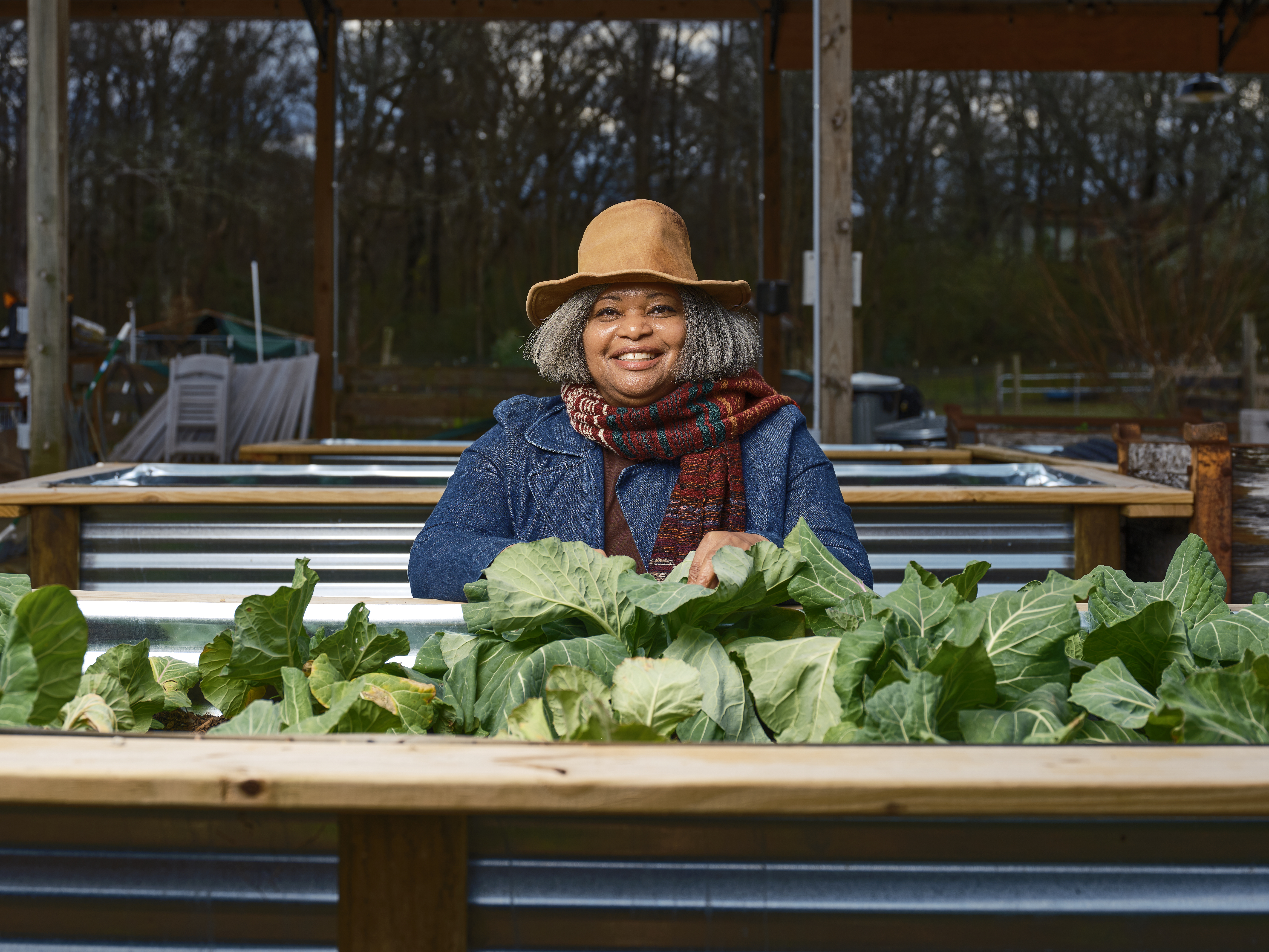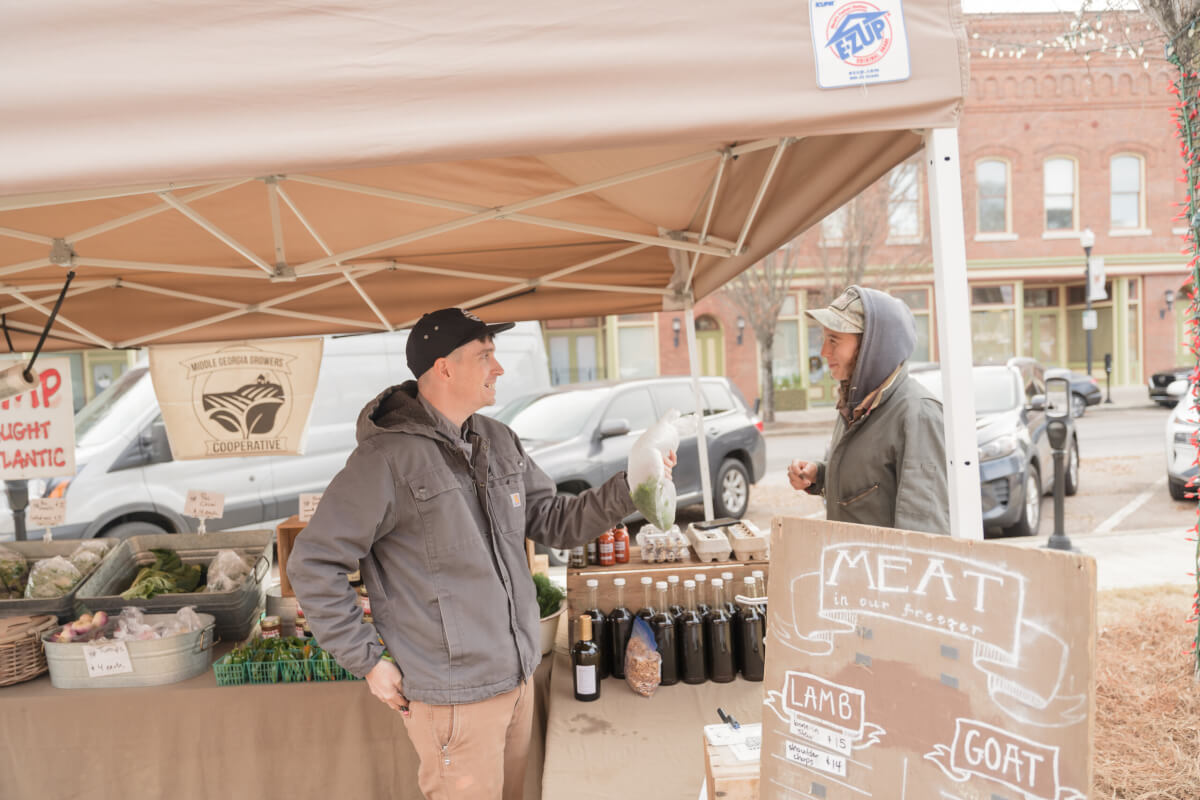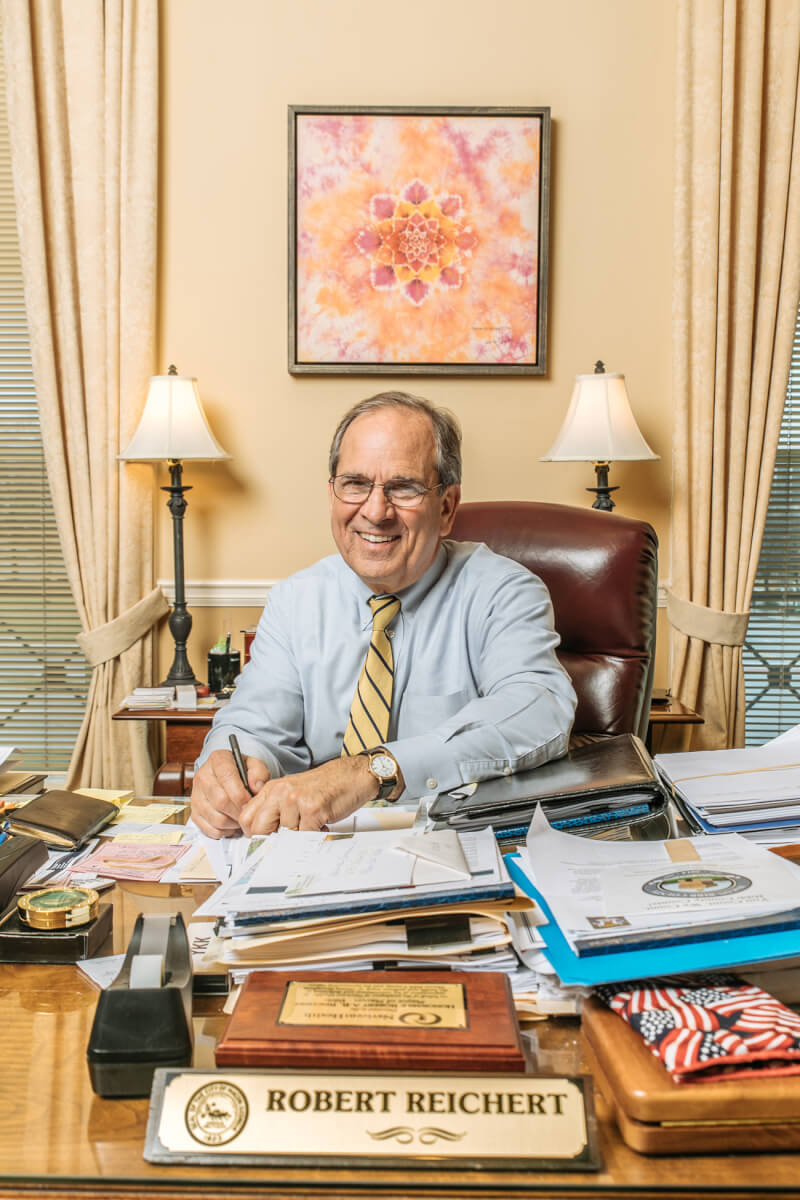
Mayor Reichert
Mayor Reichert
As his term nears an end, Macon Mayor Robert Reichert reflects on his greatest accomplishments and biggest challenges
By Jami Gaudet
Photography by Matt Odom
By Jami Gaudet
Photography by Matt Odom
Life is sprinkled with serendipity. When asked to tackle a profile on outgoing Macon-Bibb County mayor and native son, Robert A.B. Reichert, I recalled a cover story I penned 10 years ago for The Eleventh Hour.
During that expansive Q&A, at the halfway point in his four-year term as the mayor of the City of Macon, Reichert talked about the herculean effort to right-size the government and get Macon’s financial house in order while hawking city unity.
What a difference a decade makes. Ineligible to run again given the two-term limit in the consolidated government’s charter, when the mayor departs in late December he’ll have served as mayor of the City of Macon and of consolidated Macon-Bibb County for a total of 13 years.
As the days wind down on the Reichert administration, I returned to his office in the Macon-Bibb County Government Center for a couple of chats. An eternal optimist with boundless enthusiasm, the affable chief executive reflects on the colossal legacy projects he championed, namely Macon-Bibb County’s 2014 consolidation and the Second Street Corridor.
Alternately introspective and animated, Reichert is well-versed on every project and facet of city/county government. We covered a range of topics, including the deep-seated challenges he faced joining two such disparate entities as the City of Macon and Bibb County; the vision and promise of the Second Street Corridor; regrets at unfinished business he’ll leave behind; and future plans when he drops the title of mayor and reclaims his privacy.
Despite the naysayers, disrupters and inevitable clashes in running a city with a diverse population riddled with generational poverty and crime, the mayor’s love for his hometown is unmistakable. His faith in its people and in the city’s potential is unshakable.
Given his lengthy tenure and the finish line in sight, it stands to reason that Macon-Bibb’s chief executive might be a little battle weary, predisposed to spend his final months in office on a glidepath to December. However, the city’s 48th mayor and the first of the consolidated government contends it’s full-steam ahead.
He’s juggling a multitude of consequential tasks – balancing the budget, project completions, seizing potential economic development opportunities while debating Confederate monuments and face masks. The game may be almost over, but Reichert’s plate remains full and he’s determined to run out the clock on his administration just as he entered it – with vigor and enthusiasm.
ELECTION
Jami Gaudet: Let’s start with the infancy of your candidacy for mayor. You had a successful law practice and served in the Georgia House of Representatives. What inspired you to run for Macon’s top job, and what was your vision?
Mayor Reichert: I saw the community struggling and divided and was concerned about the future. Let me be candid. I didn’t come into office with a clear vision, other than to try to help. The community was tearing itself apart – losing population, losing business and the tax base, and worse, we were angry with ourselves. My vision was to work together as a community.
We stumbled into my campaign theme while handing out thousands of NuWay hotdog coupons. The back of the coupon said, “Let’s do things a new way.” It was a double entendre meaning, let’s work together for a change in the community, which became the theme of my inaugural address, “Move On, Move In, Move Up Macon.”
JG: After inheriting such a fractured city, how did you begin the healing process?
Mayor: When I was in the Georgia legislature, dozens of times I heard, “If Macon and Bibb County would get its act together, it could really be successful.” I tried to work with every area of the community to pull us together, and we’ve had some success, which reinforces the idea that when we work together there’s no limit to what we can accomplish.
JG: Given the realities of government with competing agendas and a variety of personalities, how did you approach your initiatives?
Mayor: With optimism and enthusiasm. Years ago, the city had a theme, I think the Greater Macon Chamber of Commerce came up with it – Macon believers. I’ve been a Macon believer for a long time.
CONSOLIDATION
JG: You morphed from mayor of the City of Macon to mayor of Macon-Bibb County, the new consolidated government. How did your goals change with the expansion?
Mayor: We started by trying to annex additional territory into the existing City of Macon, drawing lines that made sense, adding population 360 degrees around the old Macon city limits, and getting rid of some of the crazy lines.
But we weren’t able to get traction with the legislature to redraw the city lines while also trying to expand the city limits further into Jones County because pieces of Macon protruded into it. We held a public hearing in Gray and a large, angry crowd wanted no part of being part of the City of Macon.
Instead of expanding the city limits, state Rep. Allen Peake said he’d prefer that we try consolidation. So, we consolidated the government and unified the people. That became my battle cry. We’re all in this together, so let’s make it work.
JG: Given the enormous complexities of consolidation and the ongoing difficulties, if you could have a do-over, would you consolidate Macon and Bibb County again?
Mayor: Absolutely. It’s been the greatest thing in the history of Macon and Bibb County. We’ve hit a stride and are coming together and working together. The legislature crafted the charter so we’re a city and a county. Some people thought we’d lose our identity as one or the other, but we did not. We expanded the city limits, made them co-terminus with the county line, and elected one group of representatives to run both municipal and county functions, which are two separate things.
When one government operates both county and municipal functions, there’s a sense of balance and you’re more effective. Consolidation is the greatest thing we’ve ever done. We had a lot of work to do, but became more efficient in the process.
And one of the smartest things we’ve ever done was to make local elections nonpartisan. I can’t imagine partisan politics right now on the local level. A lot of the progress we’ve made is because we forced people to get beyond party labels.
JG: What are the positive outcomes of consolidation?
Mayor: Beyond the efficiency and effectiveness is a sense of belonging, which has expanded into a sense of regionalism. There are several things we’re working on as a region and that’s great for us.
We have the Middle Georgia Regional Airport with direct flights to the Baltimore-Washington International Airport twice daily.
Middle Georgia State University has five regional campuses in five Middle Georgia cities and a marvelous partnership with Robins Air Force Base. The old Boeing building is being leased by the technical college system of Georgia, and Central Georgia Technical College has moved two of its premier aviation-related courses there. Students are working alongside civil service employees from Robins to manufacture component parts for aircraft like F-15s or C130s.
We’ve learned that the workforce is regional and have attracted several big employers because of the regional workforce from which they can draw.
JG: What are the shortcomings of consolidation?
Mayor: It’s not a silver bullet for every problem, but we may be a little more effective with all of the services consolidated in the sheriff’s office. But, in fact, crime has not been sufficiently addressed.
JG: Compare the 15-person city council with the nine-member county commission.
Mayor: In city government, we had a 15-member council with a mayor who wasn’t invited to the meetings and a council president who presided over the meetings. That’s rich.
Now, we have a nine-member commission and I’m a member. I set the agenda, preside over the meetings and don’t vote, unless there’s a tie.
What’s amazing to me, and makes being mayor so much fun, but so difficult, is the combination of three things. Number one is the variety of issues we deal with – like pension plans, healthcare benefits, crime, homelessness, economic development and recreation. Number two is the complexity. Nothing is easy anymore. And number three, the sheer volume of work. It pours down like rain out of the ceiling.
CRIME AND LAW ENFORCEMENT
JG: Was it the right move to consolidate law enforcement services under the sheriff’s office?
Mayor: Yes, but it’s still a work in progress. The sheriff has done a wonderful job of putting together two different groups and molding them into one effective team.
JG: Although the actual number is debated, there’s a significant manpower shortage in the department.
Mayor: Yes, it’s much more difficult to be a law enforcement officer today. There’s the danger, and they’re not respected. Increasingly, when law enforcement stops someone for speeding, they don’t know whether they’re a drug dealer, someone who wasn’t paying attention or a homicidal maniac.
One of my most sobering moments was patting a deputy sheriff on the back and feeling the body armor under his shirt. When you put body armor on every day for work, it impacts your psyche.
Dwindling numbers in law enforcement aren’t only about money. It’s also the risk. Law enforcement is more dangerous and less appreciated than ever before. And everyone is looking and watching. They can have an unblemished record, and then one incident – and boom.
JG: Do you have any suggestions for attracting deputies?
Mayor: We must have an attractive workplace in the community, meaning appropriate compensation, good benefits and working conditions – and recognition. Internally, there must be an esprit de corps. An attractive workplace can trump salary.
JG: How do you characterize the relationship between law enforcement in Macon-Bibb and the black community?
Mayor: Restless, bordering on tense. But I hasten to give Sheriff David Davis and his deputies a lot of credit for trying to keep the lines of communication open so if people have an issue, there is a process that’s followed to determine the merits of the complaint and to take action if the officer was wrong. Having an effective system to report misconduct by a deputy has done a lot to ease the tension, which isn’t to say there isn’t underlying tension and restlessness, but I want to see it improve even beyond where it is now.
JG: Generally speaking, do you think there’s mistrust between law enforcement and the black community?
Mayor: I wouldn’t say mistrust, I would say skepticism is a better word. They’re skeptical if they’re going to be treated fairly, treated the same or subject to additional scrutiny. That falls under the larger umbrella of white privilege. Some African-Americans feel that they’re watched more closely in a store by employees than white patrons, and feel they’re being selectively watched because they’re black.
JG: Sheriff Davis recently unveiled the Concord Project, a new initiative to prevent and reduce crime and to strengthen race relations in Macon-Bibb. How hopeful are you that the program can make a difference?
Mayor: I applaud Sheriff Davis for his efforts to be proactive in crime reduction efforts, while concurrently maintaining an excellent record of reactive efforts to identify and arrest those individuals suspected of committing crimes. I think his Concord Project cries out for community support as the Sheriff’s Office alone cannot be expected to be successful. We all need to be involved in some way in this effort.
BLIGHT
JG: Several years ago, you deemed blight a high priority. How has your blight removal strategy changed?
Mayor: We issued bonds to do big blight projects, and in order to provide the bond’s debt service, we took the money we had been using to demolish 100 houses a year and instead used it to repay the bonds.
The bonds did a couple of great projects. We spent $2 million in Beall’s Hill, a neighborhood that’s doing well. We tore down 22 blighted, delipidated structures on Wise Avenue in Pleasant Hill right off Riverside Drive next to the Armory, creating a green space and recreational field.
Then, the county commission created 10 pots of money, one for each district, and each commissioner chose a blight project in their own district. Mill Hill Arts Village and the reconstruction of the community center on Clinton Avenue is another good project to which several commissioners contributed – but people didn’t easily see the impact.
It’s estimated that Macon-Bibb has more than 4,000 blighted houses and we were removing 100 a year. At that rate, it would take us 40 years – like Moses wandering in the desert – to remove them all.
In the same vein, we must deal with poverty, which isn’t a municipal or county function, but is visited on us in a multitude of ways. Intergenerational poverty is responsible for a lot of crime, which breeds ignorance and in turn, breeds poverty. People can’t seem to break out of it.
Another aspect of poverty is homelessness, a lot of which stems from mental illness. The U.S. Department of Justice sued Georgia and several other states forcing them to find a less restrictive alternative to incarceration for the mentally ill.
Over several years, the state of Georgia emptied out Central State Hospital putting 3,500 patients out on the street for out-patient services, which, in my opinion, contributed mightily to homelessness in Macon. As a result, we have mentally ill people wandering the streets who are only semi-able to take care of themselves.
And homelessness isn’t one-size-fits-all. There are a multitude of reasons someone becomes homeless. Some are mentally ill, others are addicted to drugs, some can’t hold a job or get separated from family because of addiction issues. Increasingly, they’re creating a public health and public safety issue with which local government is forced to deal.
A lot of issues like this come down from the federal level to the state level, and in turn, the state dumps them onto local folks to deal with them.
RACE
JG: Let’s talk about race, specifically the situation you found upon taking office 13 years ago and how you see race relations today.
Mayor: In my inaugural speech, I talked about a simmering stew of racism – like a pot of beef stew on the stove. When you walk in, it permeates the house. It’s almost the same with racism.
We’ve made tremendous strides in pulling the community together in many different ways. From the beginning, my idea was to work together in new ways, for a change. And people who are black, white, brown and yellow agree it’s better when we work together. We’re not there yet, but we’re on the road moving in the right direction.
JG: Some say that race relations have improved in Macon-Bibb, but acknowledge that a small group of persistent agitators remain.
Mayor: Societal attitudes are hard to change, but I agree with Martin Luther King Jr., “The arc of the universe bends slowly, but it bends toward justice.” Sometimes that’s a good thing. But it must change over generations. Some people and their attitudes have to pass away before we can move forward. That’s not to wish anyone ill or dead, but some people are so caught up in the position and baggage they’ve brought from another generation.
JG: The recent killing of several black citizens at the hands of law enforcement officers, including two high profile cases in Georgia, have sparked civil unrest nationwide. What effects have you seen in Macon?
Mayor: They have affected every community in the country, figuring into the Black Lives Matter (BLM) movement. Macon has been blessed not to have had an incident recently that exacerbated the current national conversation. The last one I can remember that caused concern was Sammy Davis Jr. in 2012 and it had its own set of extenuating circumstances.
The current movement is much broader than police tactics and excessive use of force. Today it’s about equity and inclusion – that black lives matter, not just in reference to killings by police, but in term of neighborhoods, accessibility, inclusion, etc. As a country, we haven’t done what we’ve needed to do since the civil rights movement to ensure equal protection under the law and equal opportunity. All of that is part of this movement.
JG: There were a few BLM protests here in the city. How would you characterize Macon-Bibb’s response to the national headlines?
Mayor: Peaceful, orderly, expressing empathy in trying to build a more perfect union, looking at how we can be a more equitable, fair, open and inclusive society, much like what King described in his “beloved community” message.
JG: With those goals in mind, what constructive steps can we take to embody King’s ideals?
Mayor: Something as effective as ordinance changes in procurement. For example, in a competitive bidding process, offering points for minority participation. For several years we’ve been working with a Washington, D.C., attorney to create a more inclusive and equitable procurement policy. Also, symbolic gestures, like the relocation of Confederate statues, monuments and memorials.
JG: Earlier this summer, a resolution was introduced to relocate a Confederate statue in downtown Macon.
Mayor: Commissioner Virgil Watkins’ resolution sought the creation of the plaza called for in the Macon Action Plan (MAP) at the intersection of Cotton Avenue and Second Street and to relocate the Confederate statue currently housed there. The resolution was discussed during committee meetings.
JG: But you introduced an amendment that expands the resolution and includes additional improvements to the downtown landscape.
Mayor: I spoke to Commissioner Watkins about a substitute to include three improvements in the downtown area, each with a “financial trigger” of funding to be raised for the project to begin: (1) $500,000 for a plaza at Cotton Avenue and Second Street to include sufficient funds to relocate the Confederate Soldier Monument to Whittle Park; (2) $1.5 million for a roundabout at Poplar Avenue and First Street with a median along First, and sufficient funds to relocate the Confederate Women & Children Monument to Whittle Park; and (3) $3 million to renovate Rosa Parks Square.
JG: The commission voted 5-4 for the substitute, with Watkins’ support.
Mayor: I believe this will set us on a course to build an attractive downtown that unites the community and reflects the image of what we aspire to be. These symbolic gestures, with physical and practical implications, create a win-win. When tied together, we’ll have extraordinary downtown beautification and simultaneously a resolution for the issues we’re currently confronting.
I’m very proud of the commissioners who voted for this. Their decision to move forward with these three downtown improvement projects will be recognized as the point when Macon-Bibb County embraced the future and decided to build a more inclusive and unified community.
REGRETS
JG: What keeps you up at night? Any regrets?
Mayor: Yes. As my time as mayor draws to a close and I see what’s no longer possible during my tenure, I have regrets. In some cases, they’re big issues and things that are hard to change. Others are more defined and it’s easier to get something done.
I haven’t been able to get the Sardis Church/Sgoda Road Connector done, tying I-16 to I-75 with a new connector to create an industrial logistics complex. That issue was on a T-SPLOST and we lost 49-51. Now, it will have to wait for another day.
We’ve got a good start with Sardis Church Road to Ga. 247, a $53 million project that transformed south Bibb and north Houston counties. If it were to continue across the Ocmulgee River and tie into the Cochran Short Route and I-16 at Sgoda Road, it would, (a) complete the Fall Line Freeway through Bibb County, (b) link I-16 and I-75, (c) provide access for Robins Air Force Base, and (d) create a new river crossing halfway to the next bridge north (Coliseum Drive Bridge) and the next bridge south (Ga. 96 below Kathleen), eliminating some of the hourglass effect that drives all traffic through Baconsfield.
Everyone wonders why the traffic at Baconsfield is so bad. It’s because four bridges cross the river within about a mile-and-a-quarter of each other – the interstate bridge, Spring Street bridge, Second Street bridge and the Coliseum Drive bridge. The next bridge to the north that’s publicly available is in Forsyth, and the next bridge to the south is Ga. 96. So, to cross the river you’ve got to funnel into one of these four bridges and then fan back out.
MIDDLE GEORGIA’S HUB CITY
JG: As you leave office, what do you wish for Macon-Bibb County?
Mayor: I see Macon-Bibb County as the hub city of the Middle Georgia region. That’s my elevator speech: A city that offers opportunities not found elsewhere in the region to the same level and extent – higher education, healthcare, sports, entertainment, shopping, dining, housing, career and employment, and the connectivity to access those opportunities, and go back out.
Holy mackerel, we’ve got connectivity. We’re blessed and cursed to have I-16 and I-75 come together, and we’re on the Fall Line Freeway.
A lot of people drive in to Macon daily from other counties and then return home. It’s said that our daytime population swells by 30,000 to 40,000 people over our nighttime population of 155,000.
Someone asked me recently, “Doesn’t it make you mad when you’re on Tom Hill Sr. Boulevard and you see someone from River North with a boatload of groceries?” My reply, “Heck no, that’s great, because they sprinkle fairy dust all over the cash register with the sales tax they pay and I don’t have to send the fire department if their house catches on fire. I don’t have to educate their kids or send sheriff’s deputies to their house for a domestic dispute or a burglary.”
And whether it’s people traveling to or through Macon for a conference or convention, families spending the night before going to see Mickey Mouse in Orlando, people having dinner and buying goodies while they’re here and then hitting the road – it adds to our hotel/motel tax and sales tax collection and that’s wonderful.
We need to continue to find more and better ways to become the hub city of the Middle Georgia region. That’s my wish and hope.
And here’s another part of that. Housing opportunities are important and we’re fortunate to have ample housing stock. There are neighborhoods with homes that are slightly dilapidated and slightly deteriorated that can be revitalized, which gets us back to that walkable, livable area that more people – especially millennials, young people and empty nesters – are moving into.
JG: I understand that demand for downtown lofts and apartments exceeds the supply.
Mayor: It does. They’ve built 650 and we’ll have more than 1,000 over the next several years. And just think, 10 years ago no one lived downtown or even went there.
Like so many other communities, we got “malled” in the 1970s, which took all four anchor stores out of downtown Macon and literally sucked out the lifeblood to the point there wasn’t enough economic activity there to justify tearing anything down to rebuild it.
When people started tiring of the mall they said, “We sure wish we had a walkable, urban space with wide sidewalks.” And we did – downtown.
AFTER OFFICE
JG: Without the weight of Macon-Bibb County on your shoulders, how do you see your future?
Mayor: I don’t know. I’m not going to retire. I will continue to work. I will probably use my law practice, but I’m not sure whether I go back to Anderson, Walker and Reichert in some former capacity, try to teach local government law or find other ways to use my talents, education and experience. I don’t know what I’m going to do, but I’m going to have a good time trying to find out.
JG: You’ve been the ringmaster for more than a dozen years. Will it be hard to give up the spotlight – not in an egotistical sense, but as the man in charge?
Mayor: Am I sad to leave the spotlight? No. I’m looking forward to becoming an anonymous citizen again.
It’s incredible after 13 years how so many people recognize me, not so much my appearance and my face. They know my voice. I was in the grocery store having a casual conversation with the cashier when someone in line behind me said, “That sounds like the mayor.”
JG: You do have a distinctive voice. But, will you miss running things?
Mayor: No, I don’t think so. You don’t have to run things to be effective. I’m going to find other ways to contribute.
JG: In preparing to leave office, especially after 13 years, some people might take a glide path to their term’s end, but you seem as energetic as ever.
Mayor: It’s still full-steam ahead in trying to make good things happen in Macon-Bibb County in the next several months.
JG: How would you characterize your tenure as mayor?
Mayor: I’ve been blessed with wonderful partners – Mercer University, Navicent, NewTown Macon, Central Georgia Technical College, the Industrial Authority and the Urban Development Authority, among others.
Macon-Bibb County has always had a four-horse wagon able to carry heavy loads. But our problem is, we hitched a horse to each wheel and pulled in four different directions wondering why the wagon wasn’t moving. Now, everyone is pulling the wagon and it is moving.
JG: Assess the new county commission that takes office in December.
Mayor: I don’t know any of the new commissioners well enough to opine on what they’ll do or not do or what their goals and aspirations are. But there will be four new commissioners and five returning commissioners representing a healthy turnover, but maintaining continuity between one administration and the next.
SECOND STREET CORRIDOR
JG: How about your legacy?
Mayor: To the extent there is one, and I’m not sure there is, it’s the Second Street Corridor, the brainchild of Scott Page from Interface Studios.
I wasn’t even mayor a year when the county purchased property across from the LEC (Law Enforcement Center) to build a new county courthouse. There was a roar from the community that the courthouse was being moved “out of downtown.”
I said, “They’re moving it six blocks down the street.” But to many people, that ain’t downtown.
It became obvious that in the minds of many people, downtown was three streets: Mulberry, Cherry and Poplar, between the Terminal Station and Mercer Law School.
(Holding a sheet of paper vertically): For $35,000, Scott Page did an initial study and evaluation and said, “You need to change the linear access of downtown – change the orientation, east/west, from the Terminal Station to the law school.”
(Turning the sheet of paper horizontally): The common thread was Second Street, starting on the east side of the river, merging into Gray Highway past Emery Highway and Coliseum Hospital; past the conference center, over the Second Street bridge, past the Government Center, Bibb County Courthouse and federal courthouse; past the business center, Mulberry, Cherry and Poplar; past Navicent and the LEC, over to Little Richard Penniman Boulevard and the student center at Mercer connecting I-75 with I-16 – not with a high-speed thoroughfare, but with a walkable, bikeable, retail-friendly, pedestrian-friendly “Complete Street.”
I took that $35,000 idea to the county during their 2012 SPLOST and they gave me $8.5 million in the SPLOST, which passed. We spent a year and $500,000 in public charettes and details, and came up with the Second Street Corridor plan.
We’re marrying centers throughout the city – the government center with the business center, the health center (Navicent) with the law enforcement center (LEC) and student center (Mercer). When the vista of downtown is laid out before you, and you work your way through downtown past all the centers of economic activity pulling you into a synergistic pattern – boom! That’s the Second Street Corridor.
JG: Is the completion of the Second Street Corridor while you’re still in office one of your proudest accomplishments?
Mayor: Yes, ma’am, that and consolidation.

